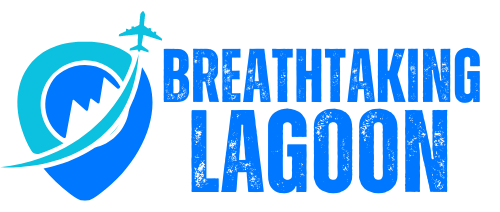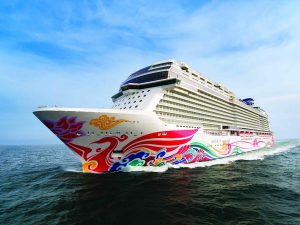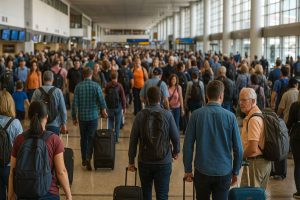Summer travelers, gear up. This Fourth of July is going to be a busy one, especially across California.
Independence Day is often one of the busiest travel periods outside the winter holidays, and this year is expected to be no different. A record-setting 72.2 million travelers are estimated to go on a domestic trip between Saturday, June 28, and Sunday, July 6, according to AAA. That’s 2.4% more than last year.
As usual, driving will be the most popular mode of transportation, as a predicted 61.6 million car travelers will hit the road. However, air passengers are also projected to break a record, with 5.84 million fliers despite round-trip domestic airfare being 4% more expensive than last year at an average of $810.
This year, the Fourth of July is a long weekend – the perfect chance for a summer getaway. “It’s been almost a decade since travelers have had a ‘Fourth of July Friday,’ meaning they are likely taking full advantage of the long weekend to build out longer trips,” said Katy Nastro, travel expert at Going. “For travelers who are planning an international getaway this year, the day-off positioning means people can strategically build a weeklong trip without burning a full work week of PTO.”
Here’s what to know about Fourth of July travel in 2025.
According to Going, airfare during the Fourth of July week runs slightly higher than the rest of the summer because of travel demand.
Still, summer ticket prices overall are down 7% from last year. For the holiday week, domestic airfare averages 3.4% more at $585, while international flights are higher by 3.9%, averaging $1,396. Travelers can save a few bucks – and avoid crowds – if they fly on the holiday itself.
Domestic
International
For the two weeks surrounding the holiday, car travelers should aim to embark in the morning to avoid the worst traffic, according to Inrix.
Here are the best travel times:
Drivers can anticipate the busiest days on the road to be Wednesday, July 2, as people head to their destinations and Sunday, July 6, when they return home, according to Inrix. Throughout the rest of the travel period, afternoons will likely see the most congestion.
Below are the worst travel times:
San Francisco
Los Angeles
Atlanta
Boston
Denver
Houston
New York
Seattle
Washington




